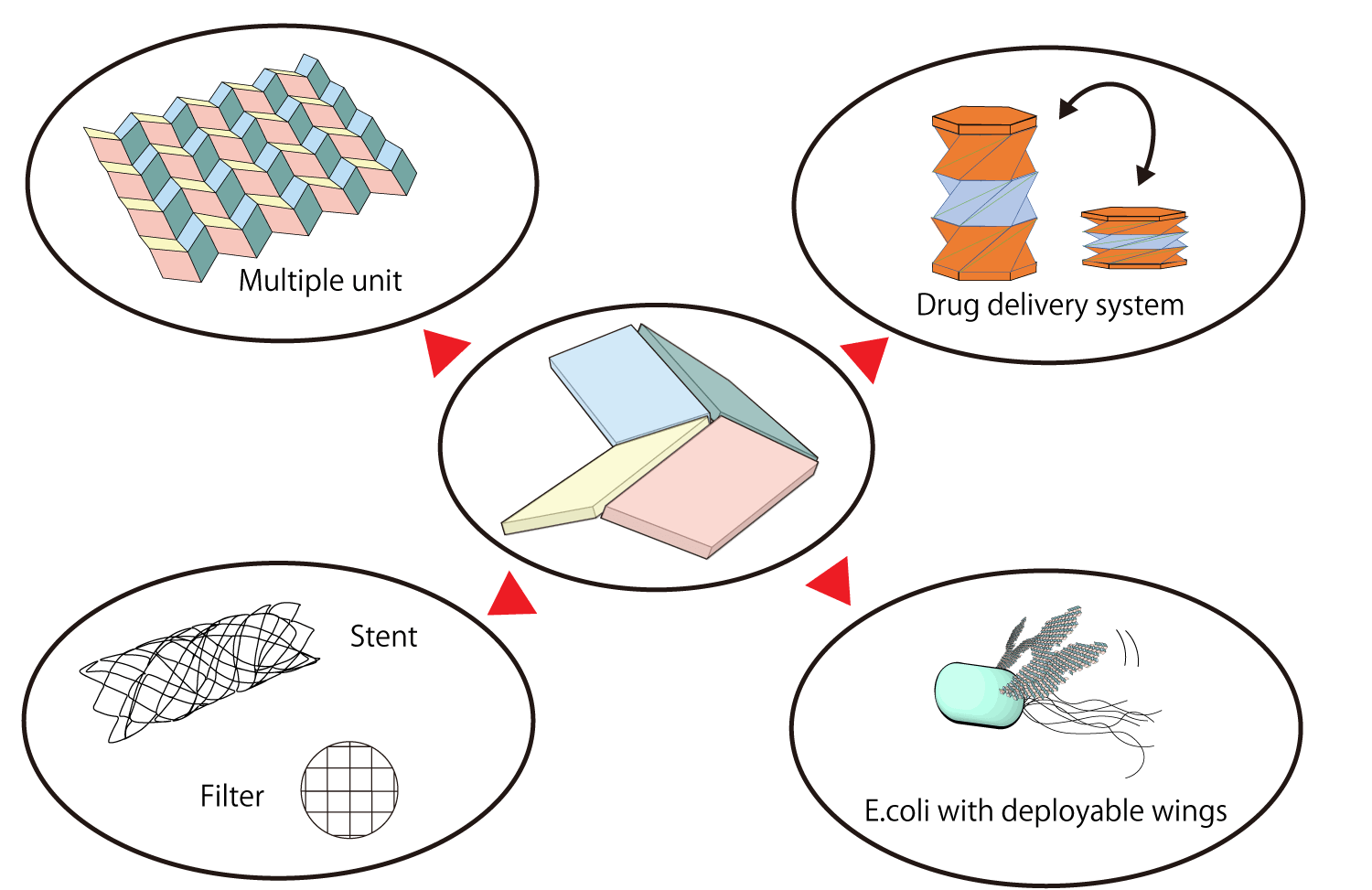Future
The “modular” pattern of Miura folding in transfoldable DNA Origami provides the flexibility to undergo large global deformations. While transitioning between closed and opened states, the bending stiffness is considerably increased. By realizing deployable transformations from 2D planar sheets to 3D actuated Origami, this transfolding system may be applied to construct reconfigurable metamaterials through self-assembly.
Potential applications in near future include making self-folding nanorobots from planar materials, autonomously transforming themselves into desired functional form via self-assembly [2]. For example, digestible nanorobots made of transfoldable materials would first be delivered in the closed state. After “actuators” attached to arbitrary edges are activated by corresponding signals, the robot could perform varied “tasks” in its 3D functional form.
Another prospective application is to construct a nano-filter, by taking advantage of the cavities within zigzag-based origami pattern. When its state changes from opened to closed, cavities created could be utilized to capture nano-size particles in between the crevices. Medically, this nano-filter might be used for capturing trapped “wastes” [3].
Our designed transfold system also has promising future in the medical field. One example could be creating surgical devices such as stents. Stents are a metal or plastic tube used to be inserted into the lumen and are ducted to maintain the passageway opening during a surgery. Making stents using our designed transfolding system will be useful since we are using DNA as the material, which is a safer than the use of metal or plastic inside a human body.
Alternatively, a possible application is to create a nano-reacting field with our transfolding system. This nano-reacting field can be folded to form a deployable capsid. The capsid would contain two distinct molecules that do not have a role on its own.The two molecules will react with each other in response to the folding into the capsid, and the reactant will act as a drug. The capsid would deploy at the target area and the drug will be released. [4][5]
Furthermore, the mechanism of our transfolding system has a potential to impart new functions to living organisms, such as E.coli. E.coli has multiple flagella, which are critical to control the movement of the bacteria. If transfoldable wings are attached to the body of E.coli, the movements of the bacteria can be controlled by modifying the degree of wing opening. Opening of the wings will decrease the speed of E.coli, while the closing will increase the speed.

Fig. 3 Applications of DNA Miura Folding
Reference
- Miura, K. Method of packaging and deployment of large membranes in space. Title The Institute of Space and Astronautical Science Report, 618, 1 (1985).
- Felton, S., Tolley, M., Demaine, E., Rus, D., & Wood, R. A method for building self-folding machines. Science, 345(6197), 644-646 (2014).
- Silverberg, J. L., et al. Using origami design principles to fold reprogrammable mechanical metamaterials. Science, 345(6197), 647-650 (2014).
- Takenaka, T., et al., Photoresponsive DNA nanocapsule having an open/close system for capture and release of nanomaterials. Chemistry–A European Journal, 20(46), 14951-14954 (2014).
- Suzuki, Y., Endo, M., Katsuda, Y., Ou, K., Hidaka, K., & Sugiyama, H. DNA origami based visualization system for studying site-specific recombination events. Journal of the American Chemical Society, 136(1), 211-218 (2014).